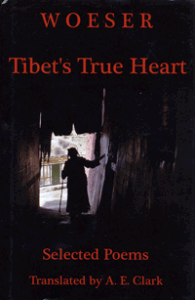
Newspaper headlines describe Woeser as Tibet’s most famous woman writer and blogger and a lone Tibetan voice, intent on speaking out. Until now, Woeser has perhaps been best known as a Tibetan dissident writer whose blogs are banned and have either been repeatedly shut down in China or hacked by Chinese nationalists. Her collection of poems, short stories and essays published in 2003 by a renowned publishing house in southern China entitled “Notes on Tibet” was subsequently banned and, refusing to be subjected to political re-education, she left her prestigious job as editor of a literary journal in Lhasa, as well as all the security such a job brought, and went to live in Beijing, where she still continues to live today.
In March 2008 she was briefly placed under house arrest, during which time she became the main source of information regarding the wave of protests and demonstrations that swept Tibet, as chronicled in the daily Tibet Updates on her blog. The threats to her personal safety have been well documented and translations into English of her Tibet Updates, published online on China Digital Times, have brought Woeser and her work to a wider audience. In July 2008, her decision to sue the Chinese government for their continued refusal to grant her a passport was a brave, audacious move, testing China’s legal system and bringing the plight of Tibetans as second-class citizens within China to the world’s attention.
Now a new volume of translations of Woeser’s poetry is available to English readers thanks to the efforts of scholar and translator A.E. Clark. “Tibet’s True Heart”, published by Ragged Banner Press, brings together original translations of 42 poems written by Woeser spanning a period of 20 years. It is a remarkable volume of poetry with translations that not only do justice to an eloquent, moving literary voice but also enlighten and educate with the copious notes, explanations and maps included in appendix.
The earliest poems contained in this volume were written in the late ’80s during Woeser’s days as a student of Chinese literature in Chengdu’s South West University for Nationalities. Although born in Lhasa during the Cultural Revolution and spending her first four years there, her family moved to Kham and she spent most of her childhood in Tibetan areas of Sichuan province, Chengdu being the provincial capital. Woeser candidly writes about growing up Sinicised − her father was a high-ranking officer in the People’s Liberation Army and she grew up very much in a Chinese-speaking environment. In her 2004 poem “Tibet’s Secret” she writes “From birth I grew up to the bugle calls of the PLA / A worthy heir of Communism”.
Through the poems included in “Tibet’s True Heart”, the journey of this girl, born into a privileged cadre family in Lhasa to school girl and student in Kham, back to Lhasa as a government employee and ultimately to Beijing in self-imposed exile, is mapped out not only in these places but also in the personal geography of several parallel journeys, the most remarkable being the journey of self-discovery and spirituality conveyed in the text through memories, people and heavy doses of personal experience. The year the poem was written along with the place is documented by Woeser and has been diligently translated by Clark with good reason, these details are crucial to the reader’s understanding of the context of the journeys. “Remembering A Battered Buddha” begins with: “Twenty days since I left Lhasa…” whilst “Return to Lhasa” begins by stating “It’s been a year. I was somewhat excited about going home”. In addition to being useful markers for the reader, places in Woeser’s poetry are imbued with significance for personal reasons. Derge, in Kham, for example, is evoked more than once in painful memories:
“Dergé, ancestral home!
Would that it meant nothing,
Would that no road led there!”
As Clark writes in his notes, “Derge was the birthplace of her father and was associated, in her mind, with his death”.
Travelling is a recurring theme associated with pilgrimage, escape, voyages of discovery. Woeser is sketching the inner and outer contours of Tibet and Tibetan landscapes are a source of inspiration in themselves. In the achingly moving 1994 poem “A Mala That Was Meant to Be”, although written in the third person, Woeser’s physical journey to Amdo is internalized with memories of her father’s death three years earlier, personal struggles with identity and a re-discovering not only of her father’s past but also of her own − all interwoven with Tibetan Buddhist imagery symbolically evoked in the poem. She describes the woman at the beginning of the journey:
“She lacks the root of wisdom.
She finds it hard to visualize
An image of the Buddha or
A letter of Tibetan
On a leaf.”
By the end of the poem, the personal revelations and discovery of spirituality stemming from grief and a deep sense of loss have made their mark:
A hundred thousand Buddha-images,
Or one hundred thousand letters of Tibetan,
Morph into as many leaves upon a tree”
These epiphanies are also to be found elsewhere in the poetry, the personal and the political slowly merging as the poet develops and forges her new identity. Subtle allusions to the Dalai Lama appear in the poetry from the late 1980s but clearly the growing discovery of faith runs parallel to the political awakening. Thus the overtly political subject matters gradually start to appear, for example the episode of the two Panchen Lamas that was both religious and political. They are metaphorically alluded to in the 1995 poem “December”, written in Lhasa, as “Two sparrows in the woods” but ten years later in the 2005 poem, written in Beijing, boldly and directly titled “The Panchen Lama”:
“If time can cover up a lie / Is ten years enough? […] The other child, where is he?”
As mentioned previously, it was in 2004, again in Beijing, that Woeser wrote the poem “Tibet’s Secret” dedicated to Tibet’s political prisoners, some of whom she knew personally. She poses the question: “of the people in prison, why are so many more wearing the red robe than not? […] we’re glad to leave the suffering to our monks and nuns […] With shame I count down their practically endless prison terms. / Tibet’s true hearts beat steadfast in a Hell that’s all too real.” Realising that due to her background she could easily have never heard about their fate, (“what’s the connection between them and me?”) she reflects on what they represent and compares her upbringing with theirs ending with their shared fates of exile and isolation, “Far from home, enmeshed in a race forever alien, […] Considering it carefully, how can there not be a connection between them and me?”.
The lines connecting the disparate true hearts of Tibet are as much virtual as psychological or emotional − technology has played a crucial role and undoubtedly created new space for reflection and self-education. Woeser’s knowledge of a political prisoner’s plight comes from “a biography I downloaded in Lhasa” and “It was only on the Web I saw, spread out before an old lama, An array of handcuffs, leg-irons, daggers…”. In “Remembering A Battered Buddha” her memory of that Buddha is kept alive digitally, “I only took some pictures, So when I miss it I can turn on my computer and have a look.” The contemporary feel is refreshing and at times provides relief from the overwhelmingly melancholy tone of the poetry. In “Spinning Wheels”, the wheel metaphor is not only the classically Buddhist circle, or Kora, or Mani wheel but also “Mitsubishi tracker wheels, Beijing jeep wheels, Dongfang truck wheels, long-distance bus wheels, Minivan wheels, red taxi wheels, Walking tractor wheels.” These observations also give the reader an accurate impression of life in Tibet today where wheels symbolise the development and changes taking place as much as the religion. Woeser’s details also identify the greatest changes taking place in Tibet today, the poem “Return to Lhasa” mentions “little fake zebras […] a pink fake lotus […] I saw the celebrated Qinghai-Tibet railway on a concrete overpass”, even noting that the taxi drivers speak in Sichuanese dialect portrays Lhasa today exactly.
Leaving aside the Tibetan themes and subject matter, there are universal themes of love, loss, grief and struggling for identity and meaning in the poems. A highly literate poet, Woeser’s points of reference are very accessible for English-speaking audiences as she keenly cites Allen Ginsberg, T.S Eliot, Gabriel García Márquez and at least one poem owes a great debt to Jack Kerouac. It is also rare that a translator can disappear to leave the poet’s own voice resounding and A.E. Clark’s translations, sensitive and true to the originals, must be commended for their elegance. Woeser is a prolific writer, blogger and poet who has given up a great deal in pursuit of the truth in her own time and on her own terms. Overcoming both prescriptive and prohibitive censorship to ironically become a truly free thinker, Woeser is a unique and much needed Tibetan voice. In the burning house of the People’s Republic of China, Woeser has so far managed to find and make use of every fire exit and trap door in order to be heard. “Tibet’s True Heart” goes some way in ensuring that these remain open for a while longer.
Review by High Peaks Pure Earth
“Tibet’s True Heart” − Selected Poems by Woeser
Translated by A.E. Clark
Published by Ragged Banner Press, 2008
Available for purchase online at:
http://www.raggedbanner.com/orders.html

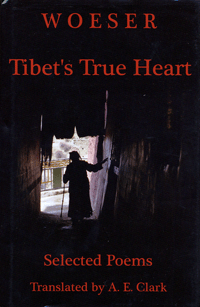
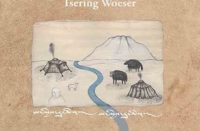
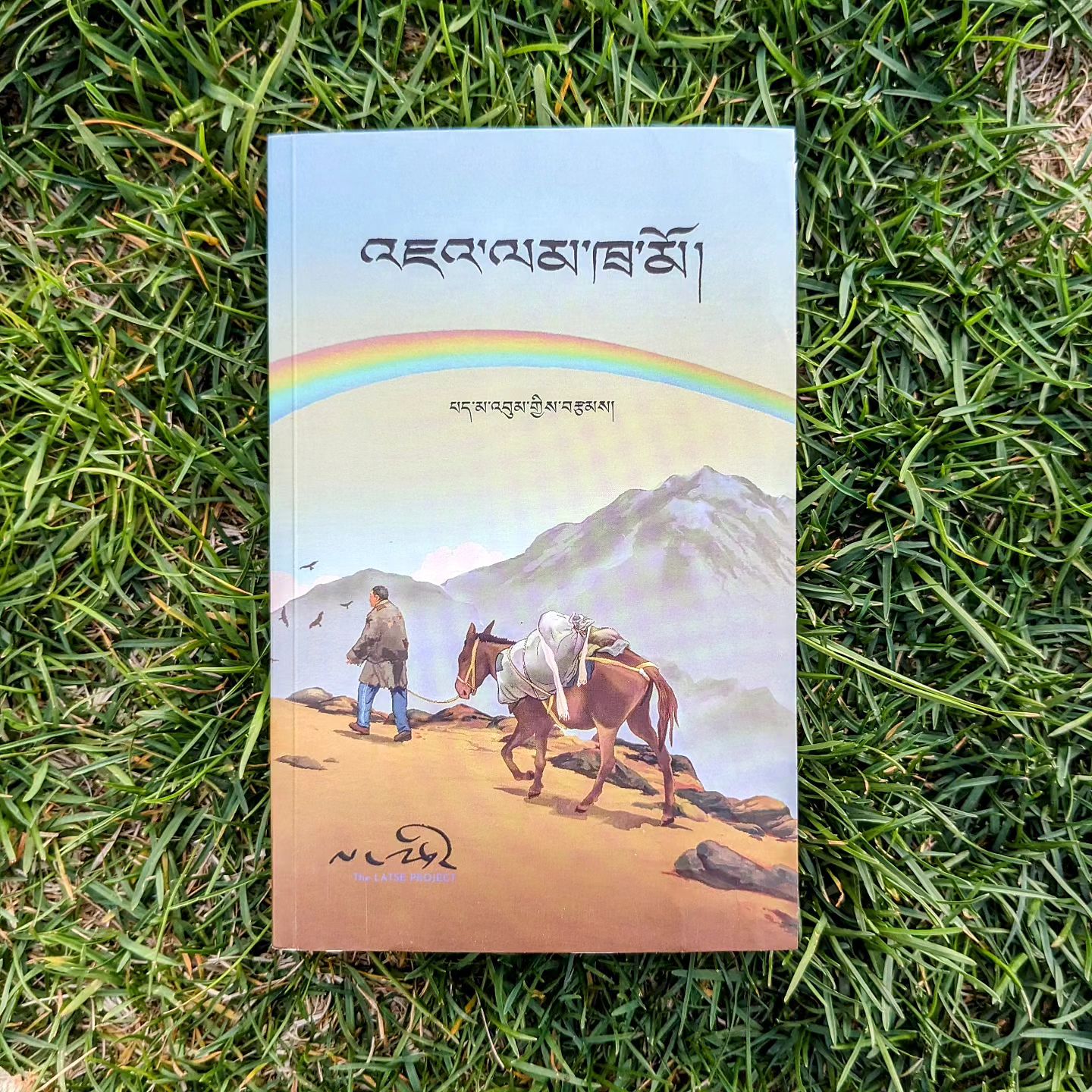
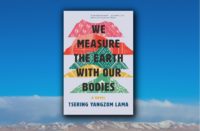
Thank you for your beautiful review of a beautiful (and of course painful) book. It’s about truth and beauty so much more than the political statements and expressions of anguish. Those, too.
Woeser’s poems are much more direct than any Tibetan poem written in Tibetan and published in Tibet. She is extremely outspoken and it is quite amazing that she is able to express herself that openly about political matters – Tibetans writing in Tibetan beat around the bush. Anybody got an idea whether this convoluted style is a game or a necessity ?
Also, one should mention the extraordinary book that Woeser (under her Sinised name Wei Se) published in Taiwan (it is forbidden in China): it includes virtually never-seen-before pictures that her father took in Lhasa during the Cultural Revolution. Woeser comments the pictures.
The title of the book is Sha jie. Sishi nian de jiyi jinqu. Jingtou xia de Xizang wenhua. Di yi ci gongkai [Murder and looting. 40 years of forbidden memory. Tibetan culture under a lens for the first time]. Taipei, Dakuai Wenhua, 2006, 296 p. For a review of the book, see http://www.cefc.com.hk/perspectives.php?iid=170
Note that Sha jie, the Chinese title of the book, means literally “Murder and looting” but is a pun on the Tibetan word for “Rebolution” (gsar brje), as is clear on the book cover.
“But clearly the growing discovery of faith runs parallel to the political awakening” – a very intersting part of the beautifully written review!
It would be interesting to get more insight into Woeser´s relationship with her father
Pingback: “An Eye from History and Reality”: My Interview with Woeser La on Cerise Press « Dechen's Blog
Pingback: “Tibet’s True Heart: Selected Poems by Woeser”